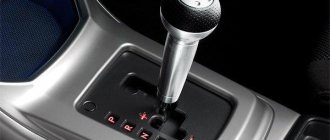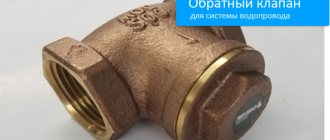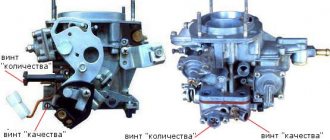A lot has been said about EGR valves, but not everything. We tried to talk about the three existing types of EGR valves, the features of their design and diagnostics.
Almost all car owners believe that the EGR system is needed to ruin their lives and reduce engine life. Actually this is not true. Let us briefly recall its purpose.
The EGR system - exhaust gas recirculation - exhaust gas recirculation (EGR) - serves to redirect exhaust gases back to the intake. Exhaust gases contain neither fuel nor oxidizer (oxygen), so they do not participate in combustion. Those. in the cylinders, roughly speaking, they simply take up space. Why is this necessary?
First of all, on a diesel engine, which is capable of running on a very lean fuel-air mixture, exhaust gases take the place of fresh air. Less air means there is less oxygen in the combustion chamber, therefore there are fewer combustion sites. After all, oxygen not only oxidizes fuel, but also at high temperatures (about 1370 degrees) oxygen interacts with nitrogen to form harmful oxides.
In addition, inert exhaust gases simply absorb excess heat, thereby reducing the temperature in the combustion chamber.
The role of the EGR system on a gasoline engine is the same - to reduce the proportion of oxygen, reduce the temperature in the cylinders. But a gasoline engine can only operate on a stoichiometric mixture, i.e. a mixture in which the amount of oxygen is exactly enough to completely oxidize gasoline. Therefore, the volumes of exhaust gas recirculation on gasoline are not as large as on diesel, where combustion is actually regulated by the fuel supply, and the volume of oxygen is not so important.
Also, the EGR system can improve the fuel efficiency of a gasoline engine by several percent, because due to the fact that the presence of exhaust gases in the cylinders reduces air consumption, and therefore fuel consumption. Those. exhaust gases allow the preparation and combustion of slightly less than the stoichiometric air-fuel mixture.
On our YouTube channel you can watch a review of EGR valves.
You can select and buy an EGR valve for any engine in our catalog of contract spare parts.
Myths about the operation of the EGR system
You can often hear that the EGR system recirculates gases into the cylinders to “afterburn the fuel.” This is complete nonsense.
In a gasoline engine, no additional fuel will burn in principle, because... To do this, you need to increase the oxygen supply. No gasoline engine control system takes into account these portions of the mythical fuel “redirected for afterburning.” Although, for example, the addition of fuel vapor from the canister of the tank ventilation system of the ECU is taken into account.
In the combustion chambers of a diesel engine, even if some fuel does not burn, it instantly decomposes into carbon and oxides as a result of pyrolysis. Pyrolysis is the thermal decomposition of compounds into their simplest components in the absence of oxygen. Black smoke from a diesel tailpipe is not “unburnt fuel,” but decomposed fuel—specifically, soot, carbon itself.
Application area
The sprinkler valve is part of the control unit of a fully functional automatic fire extinguishing system. The main task is to control the flow of water when the system is turned on. Considering the scope of application, we note the following points:
- The equipment is common in facilities where high fire extinguishing speed is required. Examples include industrial buildings and offices, as well as warehouses. Due to the lack of a large number of fire-fighting structures and partitions, fire can spread at a fairly high speed. Today, almost all shopping and entertainment centers are equipped with similar systems.
- The valve is part of automatic fire extinguishing systems. Without it, it will not be possible to ensure uniform distribution of water over the area.
- Particular attention is paid to the installation of sprinkler valves in the case of creating a fire protection system in rooms with a high fire hazard. An example is oil refining complexes, as well as warehouses for storing fuel and other flammable substances.
Every year the scope of application of such a device becomes more and more extensive. This can be attributed to the fact that even residential complexes have high fire safety requirements. It is worth considering that the “wet” design is used in systems where water is constantly in the pipeline. This type of fire extinguishing system is characterized by quite a large number of features that must be taken into account.
EGR valve types by control
Any valve is designed to regulate the flow of something by opening, blocking or closing a channel or pipeline. The EGR valve regulates the flow of exhaust gases into the intake tract of an internal combustion engine. The mechanical part of the EGR valve is most often a rod with a needle or poppet valve through which exhaust gases flow when opened. Three types of mechanisms are directly responsible for driving the EGR valve stem.
Main advantages
The system in question has a fairly large number of advantages that should be taken into account. They include the following points:
- The likelihood of false alarms is reduced. In some cases, the pressure difference causes the system to operate, which leads to flooding of the premises. Sprinkler systems are represented by a combination of several elements, which eliminate the possibility of false alarms.
- High efficiency. Water is supplied under high pressure, due to which the flow is sprayed to create a drip wall.
- Required level of reliability. With timely maintenance, reliable operation of all elements can be ensured. Some systems can operate even during a power outage by using an autonomous power source.
- Low water consumption. Due to the formation of small droplets, fire extinguishing efficiency is significantly increased and water consumption is reduced.
A fairly large list of advantages determines the wide distribution of the sprinkler systems under consideration.
EGR Vacuum Valve
The very first EGR valves were pneumatic or vacuum actuated. In this case, the rod is driven from the diaphragm, to which the force from the vacuum is applied. The earliest versions of such valves were self-actuating. The vacuum in the intake manifold through the tubes affected the diaphragm, so the gas pressure in the exhaust manifold could be taken into account. The earliest systems often had the ability to monitor or self-diagnosis using a differential pressure sensor that reacts to the flow of exhaust gases. Later, some manufacturers began to install potentiometers on the diaphragm bodies of such valves.
At the next stage in the development of the EGR system, the valve came under the control of an electrovacuum valve (valve N18 on VAG), which is subordinate to the control unit and therefore operates according to a specific program. The vacuum valve contains an electromagnetic coil that moves the valve stem connected to the vacuum line.
Structurally, the EGR valve with a diaphragm almost never has feedback. However, some manufacturers provide methods for monitoring and diagnosing the operation of the recirculation system. The control unit will be told whether exhaust gases are entering the intake by an absolute pressure sensor (MAP) or a mass air flow sensor (MAF), as well as, on a gasoline engine, a lambda probe.
DBP can detect a discrepancy between the calculated pressure and the actual pressure in the inlet.
The mass air flow sensor, in turn, can detect a discrepancy between the actual air flow and the specified one.
Thus, the presence or absence of exhaust gases in the intake is in any case reflected in the pressure and air flow.
In general, this EGR valve control system is not very accurate. Therefore, engines that comply with Euro-3 standards and higher have received more compliant EGR valves.
In most cases, such valves only need cleaning; destruction of the diaphragm occurs extremely rarely. Also, failures and incorrect operation occur due to jamming of the rod in the electric vacuum control valve.
Do-it-yourself valve grinding on a Chinese scooter. Video.
Sometimes it happens that the engine starts to have trouble starting, and the further you go, the worse the situation becomes. This happened to me with a Chinese scooter a couple of months ago. Even if it was possible to start it, it is not a fact that it was possible to get to the final destination of the trip.
After I pulled it home several times in my hands, I decided to look for the root of the problem in the engine, since I overhauled the power system (carburetor) and blew it with compressed air every time I pulled it home. I decided that the valves were out of order and needed to be adjusted. In a Chinese scooter, there is no way to adjust the valves without lifting the engine from the frame, so I pulled out and opened the cylinder head cover. Having measured it with a feeler gauge, I saw that the valves were in place and had normal clearance. The piston was recently changed and I didn’t blame it at all. The problem remained and needed to be found. Ultimately, in order to check whether the gas distribution mechanism of my Chinese scooter was working correctly, I removed the carburetor and put a plastic bag on the intake manifold, taping it tightly to the manifold with electrical tape in order to remove air leaks.
Having turned the crankshaft using the kick starter, I saw that my package seemed to be breathing. When the piston lowers and draws in air, the bag is deflated, and when the piston rises, the bag is inflated back. Based on this, I concluded that the valves do not hold and need to be ground in. In this article I will tell you how to grind valves on a Chinese scooter with your own hands. I would also like to say that the valves on a motorcycle and even a car should be ground in the same way.
In order to begin grinding in the valves, they must first be removed and cleaned of carbon deposits. To do this, remove the valve cover and unscrew the bolts and nuts securing the cylinder head, having previously unscrewed the chain tension bolt. When the head is removed, we see a burnt cavity in which there are valves that we need to grind in. The head can be removed almost the same way on a 50 cc Chinese scooter or on a 150 cc scooter.
In order to remove carbon deposits from the head and valves, you can use a metal mesh or sandpaper. In order to quickly and efficiently clean the valves, it is best to use a brush on a drill.
We clean off all the carbon deposits, after which we begin to dry out the valves. In order to disassemble the head and dry out the valve, it is advisable to have a puller made of two washers such as shown in the photo below.
In order to remove the crackers, take a clamp, place one end of it into the valve, and put the other end on the puller, which in turn rests on the washer holding the spring. See the photo below.
After we have compressed the spring, we need to pull out the nuts (clamps) that hold the valve in place. This can be done with tweezers or using a magnet or magnetic screwdriver.
When we have removed the crackers, release the clamp and remove the springs, then remove the valve from the back side.
We do the same with the second valve.
After the valves are removed, we clean their necks from carbon deposits. and proceed directly to the actual grinding of the valves with our own hands. To do this, we need a lapping paste, a rubber hose with an internal diameter slightly smaller than the valve neck. This hose should fit onto the valve neck with little effort. We also need an electric drill that operates at low speeds.
The procedure for grinding valves with your own hands is as follows. Install the valve. Lubricate the valve seat with valve grinding lubricant. On the reverse side, we put a rubber tube clamped into a drill onto the valve neck.
At low speeds, we begin to turn the valve with progressive impacts of the valve on the ground area. These hits will prevent the paste from cutting into stripes. We turn the valve in one direction or the other. After 5 - 10 minutes of such grinding, we remove the valve, wipe off all the grease and look for any scratches. If the surface to be ground has a matte color and a homogeneous uniform ring, then we begin to lap the other valve using the same principle. If there is no low-speed drill, we rub the valve with our hands by the tube, turning it in one direction and the other, opening and closing the valve (small blows).
When the valves visually do not have defects on the rubbing surfaces, we wipe off all the grease and dry (assemble) them in the reverse order. When we check the tightness of the spark plug, we place the head upside down on a flat surface and fill the recess with the valves with kerosene. Leave for 3 - 8 hours. If the valve grinding is done efficiently and correctly, then the kerosene should remain at the same level. If the kerosene is leaking, then we look at where it got wet, which valve is leaking, dry it out and begin the grinding procedure again. We do this until the kerosene stops leaving.
Don't forget to replace the valve seals and head gaskets. We install everything according to the marks and assemble the engine. Watch a video about how to properly grind valves with your own hands on a Chinese scooter, filmed specifically for the site qrx.com.ua and visit us often and bring your friends.
qrx.com.ua
EGR valve with stepper motor
The next stage of development is an EGR valve with a stepper motor. In a stepper motor, the rotor does not rotate constantly, but moves at a certain angle - the step. The rotor force is applied to the rod through a small gearbox, with the help of which the rotation of the rotor is converted into forward movement of the rod. Thus, upon command from the ECU, the stepper motor can move the valve stem very precisely. You can recognize an EGR valve with a stepper motor by the presence of 6 pins in its connector - 2 pluses for the windings and 4 minuses for controlling the stepper motor.
An interesting feature of this EGR valve is the lack of feedback on its position. When the ignition is turned on, the engine block initializes this valve. Those. forcibly sets the initial position and takes it as a reference point. Then, when the engine is running, the control unit from this position counts the steps to open the EGR valve.
But in practice, if the valve jams, the control unit can take the open position of the valve for the zero position without any problems. In this case, as a rule, no errors regarding the operation of the system appear. You can see the stuck position of the valve by the consequences of such a problem: insufficient vacuum in the intake or low air flow, by negative correction of the fuel mixture.
Functionality check
There are three ways to check that the valve is properly lapping. ➤ Using a vacuum tester. The most reliable and simple option. Connect a tool to each hole on the intake and exhaust sides of the manifolds. Now use it. If the valves are poorly lapped, the vacuum level on the pressure gauge will be insufficient. ➤ Using kerosene. Reinstall the valves, place the combustion chamber head up and pour kerosene on top. Leave them like this for several hours. If the kerosene does not leak out, everything is in order. Experts do not recommend using this method as it is not very reliable. ➤ Using a pencil. We draw radial lines along the entire circumference of the working edge of the valve seat. We install the valve in place, press it firmly and rotate it in a circle. We take out the product and look at the pattern. If the lines are erased and evenly paint the surface, everything is in order. If there are irregularities, the grinding was performed incorrectly. Grinding in the valves ensures normal engine operation. Be sure to regularly resort to the procedure - this way you can avoid problems with the power unit.
Grinding in valves (video)
Engine repairs involving removal of the cylinder head often require lapping of the valves. What kind of procedure is this, how to determine its necessity and how to grind the valves at home - read below.
Valve check with stepper motor
As a rule, power is supplied to such a valve through two central wires (pins). Accordingly, there should be voltage on them when the engine is turned on.
The windings of a stepper motor can be checked by resistance. To do this, the resistance must be measured between the central pin and the adjacent ones. The nominal value varies depending on the manufacturer. For example, on Mitsubishi EGR valves this value is 20-24 Ohms, on Mazda EGR valves it is 12-16 Ohms. In general, the resistance of the windings should be the same.
Features of the “wet” version
Such systems are characterized by the fact that water is constantly in the pipeline. That is why the device must be closed. The features of such a system include the following points:
- High efficiency. If water is constantly in the pipeline, then the required level of efficiency is ensured.
- Activation in the shortest possible time. This is why latency is significantly reduced.
Classification is also carried out according to the type of installation. It looks like this:
- Conventional sprinklers are located on the ceiling. This design option is suitable for most structures; the water is directed downwards. It is recommended to install these models in case of high ceilings, since the system has time to operate before the fire reaches the ceiling.
- Side sprinklers are extremely rare, as they are characterized by less efficiency in use. This device is installed at the top of the wall, water can be supplied under high pressure. Installed if the lateral water supply ensures high fire extinguishing efficiency.
However, such a fire protection system cannot be operated at low temperatures. This is due to the fact that the water begins to crystallize and expand. This phenomenon causes rupture of connections and damage to basic elements.
The operating features of the system should also be considered. It is recommended to install the valve at an operating temperature of at least 5 degrees Celsius. In this case, even temporary exposure to frost is not allowed.
Do not forget that constant operation at high humidity requires timely maintenance. That is why when choosing a location, the need to ensure constant access is taken into account.
Securing individual elements of the system is carried out using clamps. They are produced in a wide variety of designs, which determines the maximum permissible load and many other points. The sprinkler clamp allows the suspension height to be adjusted using a threaded rod.
EGR valve with electric motor and feedback
The most advanced and convenient drive of the EGR valve is an electromagnet or an electric motor with a position sensor for the valve itself. The valve stem is directly driven through a gearbox.
You can recognize such an EGR valve by its electrical connector: it has 5 pins. 2 pins for powering the electric motor/electromagnet, 2 pins for powering the sensor, 1 pin for the signal from the position sensor.
Power to the electric motor comes through two wires of larger cross-section. The location of the pins in the connectors is different in many cases.
You can select and buy the USR valve, as well as the USR system radiator and USR system pipes in our catalog of contract spare parts.
Now let's start adjusting the idle speed: Start the engine and warm it up to operating temperature, the pointer is almost horizontal and the speed is below rpm. Raise the speed to and hold it for about 2 minutes.
We turn off and perform self-diagnosis. Turn off the engine and remove the connector from the throttle position sensor, see.
We start the engine, nissan idle valve times up to rpm and then release the gas better smoothly. The Nissan idle air valve on the XX car stalls, unscrew the adjusting screw circled in the last photo and start the engine. Check the idle speed. Thus, the signal from the idle contacts is the signal that turns the idle speed stabilization system into operation. If the contacts are constantly open, for example, the throttle valve is out of adjustment or the throttle position sensor is knocked out, the stabilization system does not maintain idle speed.
We also note that on systems with a stepper motor, there may be no pulses to it; if the motor is stable at idle, there is no need for any adjustment. And only after all these checks are there grounds for rejecting the electronic control unit. This is where Fedor Ryazanov’s theoretical explanations end, and we again move on to the practical part. Attempts to start her up were unsuccessful.
Flushing the idle air valve (IAC) - Encyclopedia of Japanese cars
Where does the smoke come from? You can see it in the photo. And if he does not encounter such a problem often, then logic and search methods should come to the rescue.
Indeed, fuse IG1 was burnt out. Here you need to look at the general diagram and determine what it is responsible for and what circuits it powers. Let's look at the diagram: And then we look under the hood and immediately find the cause - this is IACV, the idle air valve nissan.
Photo of its connector on the right. For memory: Now let's start adjusting the idle speed: Start the engine and warm it up to operating temperature arrow almost horizontal idle valve speed below rpm. Raise the speed to and hold it for about 2 minutes. We turn off and perform self-diagnosis. We turn off the engine and remove the connector from the throttle position sensor, see. Start the engine, accelerate once to rpm and then release the gas better smoothly. If the car stalls at XX, unscrew the adjusting screw circled in the last photo and start the engine.
Check the idle speed. But not even a couple of hours had passed before I was woken up by Kostya’s call, who said in an icy voice: Cursing everything in the world and believing that Expert must have fallen into pieces or at least burned out, I rushed back. Kostya looked at me appraisingly. Should I pour me a glass of valerian?
The throttle valve was covered in some kind of liquid, which we identified as antifreeze. It also contained an idle speed regulator along with a servomotor. And on the connectors of the regulator there was a Nissan idle air valve. And it had already spread from the connectors along the wires. It would be more correct to call this unit IACV idle air control valve, but for simplicity we will call it the idle air control valve.
Cutting off Berlioz's head if, according to Bulgakov, it was ahead. Idle valve Nissan reported that the new unit assembled with the engine is only available to order, and this small motor costs about six to seven thousand rubles. With the movement of a magician, Kostya pulled out something resembling a computer board, on which there was a black burnt spot next to a swollen microcircuit.
When antifreeze got into the idle speed controller, it shorted the stepper motor and connectors, the microcircuit that controls this motor overheated, burned out and burst,” Kostya said. A new one costs nine hundred dollars, but you have to order and wait. By simply summing up in my mind the cost of the burnt components and the necessary work, I got a figure of about 34 thousand rubles. Or a little less than a euro Since at that moment there were no bags of money along the walls, I plunged into the state of the nissan idle air valve and could barely stand the nissan idle air valve on my feet.
In general, your defect is becoming typical. No wonder Nissan recalled thousands of cars. The fact is that coolant circulation is organized in the body of the XX valve. There is a thermocouple that regulates the flow of air into the engine depending on the temperature of the antifreeze. And there is also that stepper motor, which, under the control of the processor, extends and retracts the rod with a conical nozzle, blocking the air hole in the XX valve.
Where should he not go? And I was thinking - where does the antifreeze go little by little? After ten to fifteen thousand, I had to add half a liter. Well, I thought, evaporation into the atmosphere through the expansion tank. But here it is, it was already leaking a little bit. If on a QG series engine, and maybe not only you have the same slow drop in the antifreeze level, urgently take it to service: Then, perhaps , the stepper motor will also remain intact, and the Nissan idle air valve connectors will be clean, and the processor will be alive.
We need it for repairs. Idle air valve servomotor. idle air valve nissan
Knowing about such a typical defect, a smart person should not look for it during a showdown. That same vile gasket that caused everything to happen Naturally, it’s also new. The fuse, of course, is 15 A.
Costs 10 rubles. Damaged Nissan idle air valve, whose contacts are corroded by antifreeze. As it turned out, it does not need to be changed, but you just need to disassemble it and clean the Nissan idle air valve. And the worst thing: In Japan, of course, they would take a new unit and replace it. It’s probably cheaper there, that’s for sure, and the incomes of the Japanese population are much higher than ours. Most likely, eliminating a typical factory jamb would be free - that's two. And thirdly, our mentality is not Japanese. Therefore, the first thing I did was to go online to find out what the dead STAA chip was.
Nissan. The curse of the wet idle air valve (IAC)
And - oh horror! I found quite a few links that talked about the same problem! It's easy, you just need to measure the resistance. Valve setting: The setting is to ensure that the car is in good working order, all systems are in order, the engine is warmed up, and consumers are turned off. These numbers mean that the valve is in the rest position, that is, it is closed, the Nissan idle air valve does not affect idle speed in any way.











